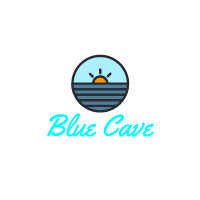The Blue Lagoon is a natural phenomenon that has become a popular tourist destination due to its stunning beauty and unique formation.
Who discovered the Blue Lagoon?
The Blue Lagoon was popularized by Baron Eugen von Ransonnet in the 19th century, who explored and documented the area.
When was the Blue Lagoon first opened to the public?
The Blue Lagoon became accessible to the public in the mid-20th century when it started gaining popularity as a tourist attraction.
How was the Blue Lagoon formed?
The Blue Lagoon was formed by natural geological processes, including the erosion of limestone and the action of the sea over thousands of years.
SPLIT CITY TOUR AND BLUE LAGOON TRIP
Has the Blue Lagoon always been blue?
Yes, the lagoon’s characteristic blue color is due to the clarity of the water and the reflection of the sky.
Who was Baron Eugen von Ransonnet and why is he associated with the Blue Lagoon?
Baron Eugen von Ransonnet was an Austrian explorer and artist who documented the Blue Lagoon in the 19th century, bringing it to the attention of the wider world.
How did locals use the Blue Lagoon before it became a tourist attraction?
Locals used the Blue Lagoon primarily for fishing and as a natural harbor.
What has changed in the Blue Lagoon since it became a tourist attraction?
Since becoming a tourist attraction, the Blue Lagoon has seen the development of infrastructure such as boat docks and safety measures to accommodate visitors.
Are there any legends or myths associated with the Blue Lagoon?
There are various local legends about sea creatures and mythical beings inhabiting the Blue Lagoon, adding to its mystique.
What makes the Blue Lagoon historically significant?
The Blue Lagoon is historically significant due to its unique geological formation and its role in local culture and history.
Were there any archaeological discoveries in the Blue Lagoon?
There have been minor archaeological findings, such as ancient pottery and tools, indicating historical human activity in the area.
Have there been any famous visitors to the Blue Lagoon?
Yes, numerous celebrities and public figures have visited the Blue Lagoon, attracted by its natural beauty.
How has tourism impacted the Blue Lagoon and its surroundings?
Tourism has brought economic benefits to the region but also poses challenges for environmental conservation and management.
Has the Blue Lagoon ever been closed to the public?
The Blue Lagoon has occasionally been closed for maintenance and conservation efforts but is generally open to visitors.
Is the Blue Lagoon recognized by any international conservation or heritage organizations?
The Blue Lagoon is recognized as a significant natural site and is protected under various local and national conservation laws.
Are there any historical events associated with the Blue Lagoon?
There are no major historical events directly associated with the Blue Lagoon, but it has been a site of local cultural significance for centuries.
Has the appearance or condition of the Blue Lagoon changed over the years?
The Blue Lagoon has remained largely unchanged in appearance, although increased tourism has led to the development of surrounding infrastructure.
How was the artificial entrance to the Blue Lagoon constructed?
The artificial entrance was carefully constructed using minimal invasive techniques to preserve the natural beauty of the lagoon.
How long did it take to make the Blue Lagoon accessible to the public?
The process of making the Blue Lagoon accessible took several years, including the construction of necessary infrastructure and safety measures.
Has the Blue Lagoon been featured in any films or documentaries?
Yes, the Blue Lagoon has been featured in various films and documentaries, highlighting its natural beauty and unique features.
Was the Blue Lagoon used for any purpose during the wars in the 20th century?
There is no significant record of the Blue Lagoon being used for military purposes during the wars in the 20th century.
How did the locals react when the Blue Lagoon was opened to the public?
Locals had mixed reactions, with some welcoming the economic opportunities from tourism and others concerned about environmental impacts.
Has there been any controversy or conflict related to the Blue Lagoon?
There have been occasional controversies regarding environmental protection and the balance between tourism and conservation.
Are there any books or academic studies about the history of the Blue Lagoon?
Yes, there are several books and academic studies that explore the history, geology, and cultural significance of the Blue Lagoon.
Are there any guided tours that focus on the history and formation of the Blue Lagoon?
Yes, there are guided tours available that focus on the history, geology, and natural beauty of the Blue Lagoon.
How has the conservation of the Blue Lagoon been managed over the years?
Conservation efforts include regulated tourism, environmental monitoring, and the implementation of sustainable practices.
Are there any historical landmarks or sites near the Blue Lagoon that visitors can explore?
Yes, visitors can explore nearby historical sites such as ancient ruins, local museums, and cultural landmarks in Komiza and surrounding areas.
